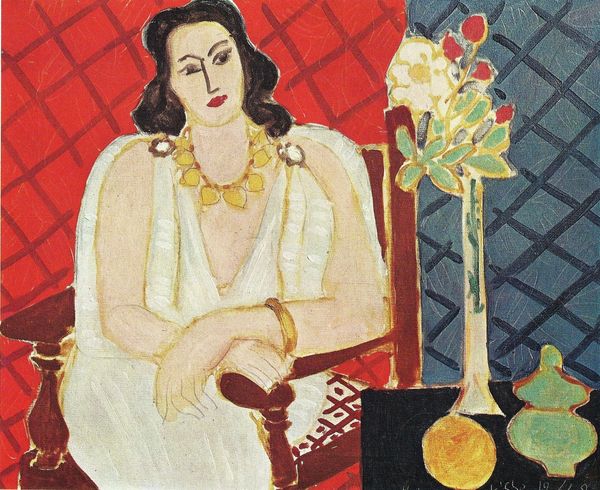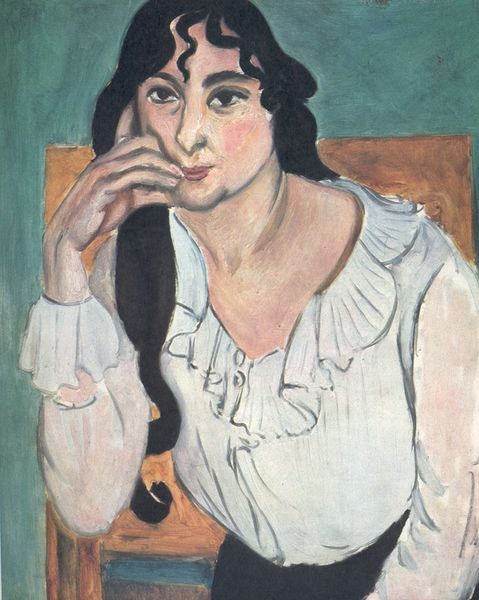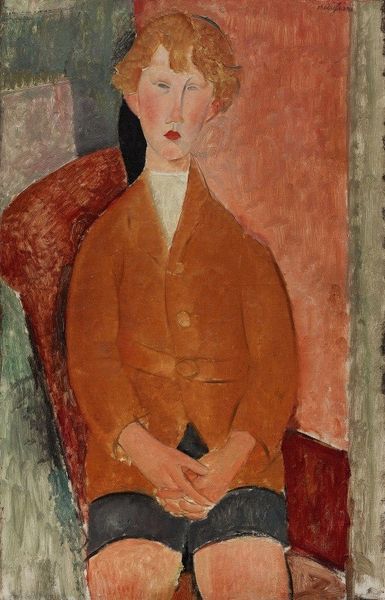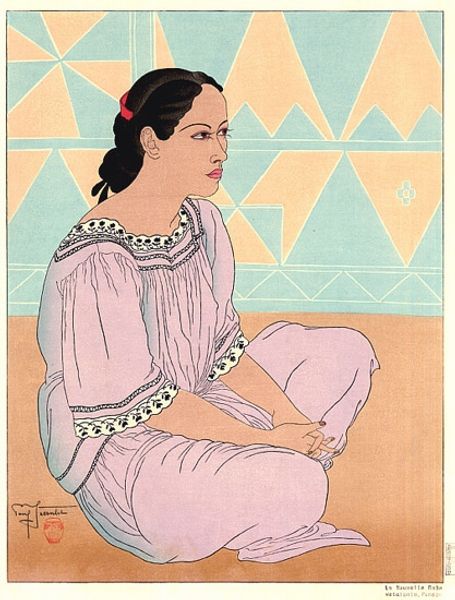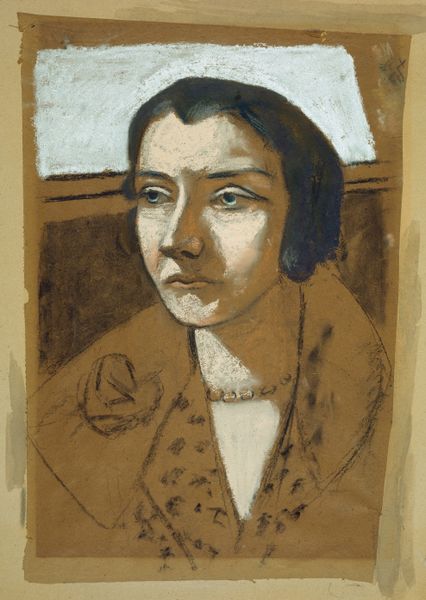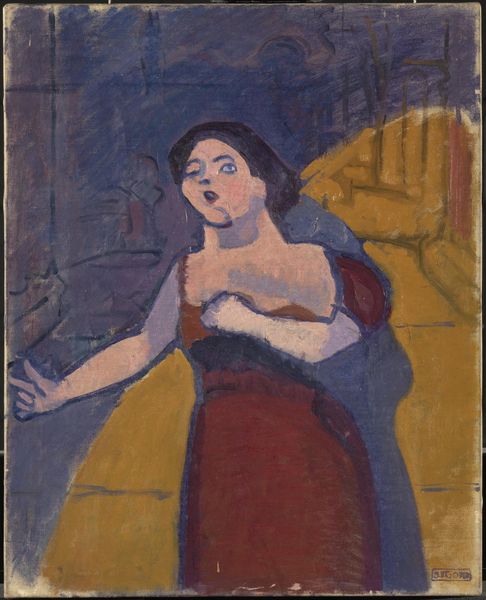
print, woodblock-print
#
portrait
# print
#
figuration
#
woodblock-print
#
japonisme
Copyright: Public domain
Editor: We’re looking at Kanae Yamamoto’s “Chinese Lady,” a woodblock print from 1914. I’m immediately struck by its contemplative mood and how the cityscape beyond the balcony blurs the line between public and private space. What narratives do you see unfolding here? Curator: It's interesting you focus on that blurring. Considering Japonisme’s influence, and the complexities of cultural exchange in the early 20th century, I see a work deeply embedded in the politics of representation. This “Chinese Lady," filtered through a Japanese artist’s lens, and referencing Western artistic trends, prompts us to consider whose gaze is privileged. Is this portrait celebrating cultural fusion or appropriating another’s identity for aesthetic gain? Editor: So you’re suggesting the title itself points to a tension between observation and potential misrepresentation? The lady appears passive, almost like an object in the artist's or perhaps the viewer's gaze. Curator: Precisely. The passivity you observe invites a critical look at the power dynamics inherent in portraiture, particularly when dealing with cross-cultural representation. Think about the concept of "Orientalism," and how Asian women were often depicted through a Western, male gaze. This work, though created by a Japanese artist, doesn’t exist in a vacuum, untouched by such perspectives. Do you think her perceived "passivity" is a reflection of her inner state or a construct imposed upon her? Editor: That reframes everything for me. I initially saw it as a peaceful scene, but now I see the potential for it to be read as a commentary on cultural appropriation and the objectification of women of color. Curator: And it’s important to hold both those interpretations – the initial aesthetic appreciation alongside a critical awareness of its historical and social context. This tension is often where the richest understanding emerges. Editor: Thanks for sharing this nuanced reading; it’s made me reconsider my own assumptions about this seemingly simple portrait. Curator: Indeed, art invites us to confront not only the artist's intentions, but also our own biases and preconceptions.
Comments
No comments
Be the first to comment and join the conversation on the ultimate creative platform.



